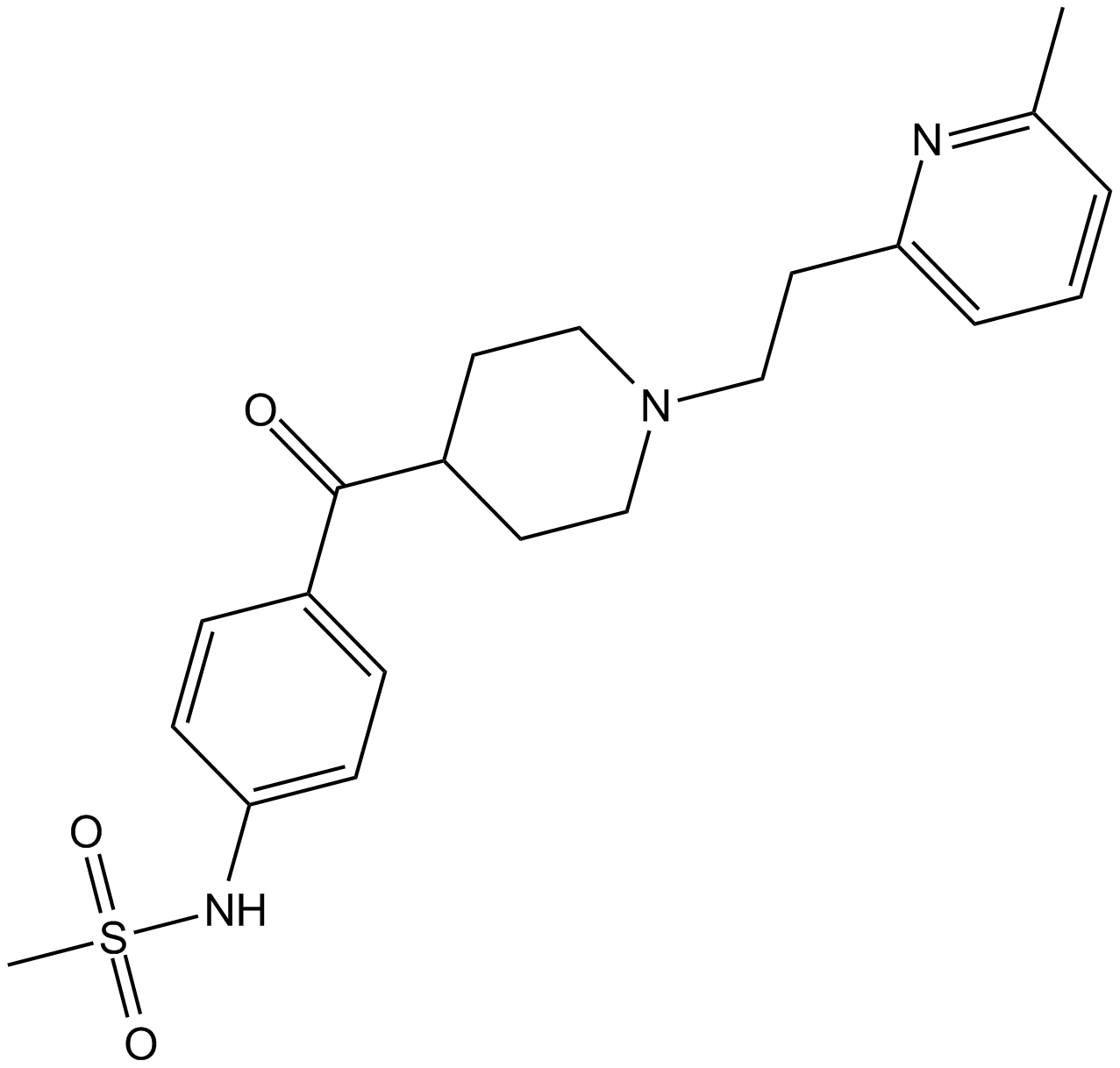E-4031 |
| Catalog No.GC13490 |
antiarrhythmic agent blocking the ATP-sensitive potassium channel
Products are for research use only. Not for human use. We do not sell to patients.

Cas No.: 113558-89-7
Sample solution is provided at 25 µL, 10mM.
IC50: 7.7 nM for hERG
E-4031 is an antiarrhythmic agent blocking the ATP-sensitive potassium channel.
ATP-sensitive potassium channels are distributed in tissues widely including muscle, pancreatic beta cells and brain. Their activity is regulated by adenine nucleotides, being activated by falling ATP and rising ADP levels. Thus, ATP-sensitive potassium channels link cellular metabolism with membrane excitability.
In vitro: It has been reported that E-4031 could induce EADs or TdP, and such induction correlated with a significant increase in variability of repolarization. In addition, E-4031 at 0.1 uM was able to significantly prolong cycle length, action potential duration, and depolarized maximum diastolic potential. E-4031could also reduce the upstroke velocity of the action potential as well as the diastolic depolarization rate [1].
In vivo: Animal study showed that E-4031 at 0.01 and 0.1 mg/kg could provide effective in-vitro plasma concentrations to significantly inhibit Ikr and thus delayed the repolarization beyond the initiation of diastole, leading to the inversion of electro-mechanical coupling, which provides an ideal proarrhythmic substrate [2]. Another sutdy found that E-4031 could prolong QT interval and ARI in all LV layers, though the magnitude of prolongation was greatest in Mid, particularly during bradycardia [3].
Clinical trial: Up to now, E-4031 is still in the preclinical development stage.
References:
[1]. Verheijck EE, et al. Effects of delayed rectifier current blockade by E-4031 on impulse generation in single sinoatrial nodal myocytes of the rabbit. Circ Res. 1995 Apr;76(4):607-15.
[2]. Izumi-Nakaseko H, et al. Effects of selective IKr channel blockade by E-4031 on ventricular electro-mechanical relationship in the halothane-anesthetized dogs. Eur J Pharmacol. 2014 Oct 5;740:263-70.
[3]. Izumi D, et al. Effects of bepridil versus E-4031 on transmural ventricular repolarization and inducibility of ventricular tachyarrhythmias in the dog. Pacing Clin Electrophysiol. 2010 Aug;33(8):950-9.
Average Rating: 5 (Based on Reviews and 23 reference(s) in Google Scholar.)
GLPBIO products are for RESEARCH USE ONLY. Please make sure your review or question is research based.
Required fields are marked with *




















